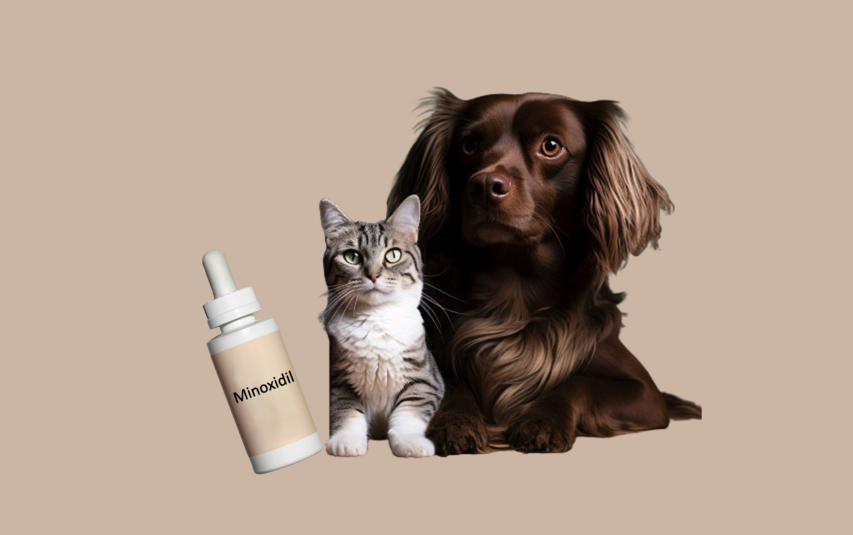Minoxidil & Pets
Topical minoxidil is used by millions across the globe as an effective solution for treating hair loss in both women and men. However, a recent study has raised concerns about the overlooked issue of pet safety in homes where these treatments are used.
What Are the Risks of Minoxidil for Cats and Dogs?
Minoxidil is renowned for its effectiveness against human pattern hair loss but poses unexpected dangers to pets. Recent research involving over 200 cases has highlighted the potentially toxic impact of minoxidil on dogs and cats, even in minimal amounts.
How Are Pets Exposed to Minoxidil?
Pets are exposed to minoxidil primarily through unintentional delivery during their owners' personal use of minoxidil. For example, cats most commonly came into contact with minoxidil when they licked their owner's skin or a pillowcase or were splashed during a medication spill. On the other hand, dogs were more likely to be exposed through exploratory behavior, such as searching through trash. A study found that out of 211 cases of dog and cat exposure to topical minoxidil, 87 showed clinical signs of toxicosis, including 62 cats and 25 dogs. Notably, these clinical signs occurred even with minimal exposure to the substance, such as a few drops or lick.
What Are the Signs of Danger in Pets Exposed to Minoxidil?
The study indicated worrying symptoms of toxicity in pets exposed to minoxidil, ranging from digestive issues to severe cardiovascular problems. Alarmingly, a significant portion of these cases resulted in moderate to severe illness, with a distressing 12.9% of the affected cats not surviving.
Another case report describes a 2-year-old dog that ingested an unknown amount of topical 5% minoxidil foam. The dog showed symptoms like vomiting, lethargy, tachycardia, and hypotension. It was successfully treated with a constant rate infusion of dopamine hydrochloride and esmolol hydrochloride, along with a lipid emulsion as a potential antidote. The dog made a full recovery after 36 hours of hospitalization.
How Can We Prevent Pet Safety Issues with Minoxidil?
Protecting our pets requires awareness and precaution. It's crucial to apply minoxidil away from pets, securely store the product, and minimize post-application contact. Veterinarians also play a vital role by discussing potential household hazards like minoxidil during check-ups.
Is There a Safer Alternative to Minoxidil for Hair Growth?
MDhair offers a plant-based solution comprising a DHT-blocking scalp serum, shampoo, and supplements for those seeking safer hair growth alternatives. This innovative approach utilizes natural ingredients to promote healthier, stronger hair growth without minoxidil's associated risks, ensuring your pets' safety.
What's the Best Approach to Hair Care While Ensuring Pet Safety?
Navigating hair care choices involves making informed decisions that prioritize the well-being of all family members, including pets. Opting for safer alternatives like MDhair and practicing cautious use of products like minoxidil can lead to the benefits of healthier hair without compromising the safety of our beloved pets.
Shop:
MDhair Plant-Based Essential Regrowth Kit
MDhair Plant-Based Advanced Regrowth Kit
MDhair Plant-Based Premium Regrowth Kit
References:
1. Topical Minoxidil Exposures and Toxicoses in Dogs and Cats: 211 Cases (2001-2019). Tater KC et al. J Am Anim Hosp Assoc. 2021 Sep 1;57(5):225-231.
2. Successful management of minoxidil toxicosis in a dog. Jordan, T. J. M. et al. Journal of the American Veterinary Medical Association, 252(2), 222-226. 2018.
Find the most effective hair growth products for you by taking the free hair assessment.




